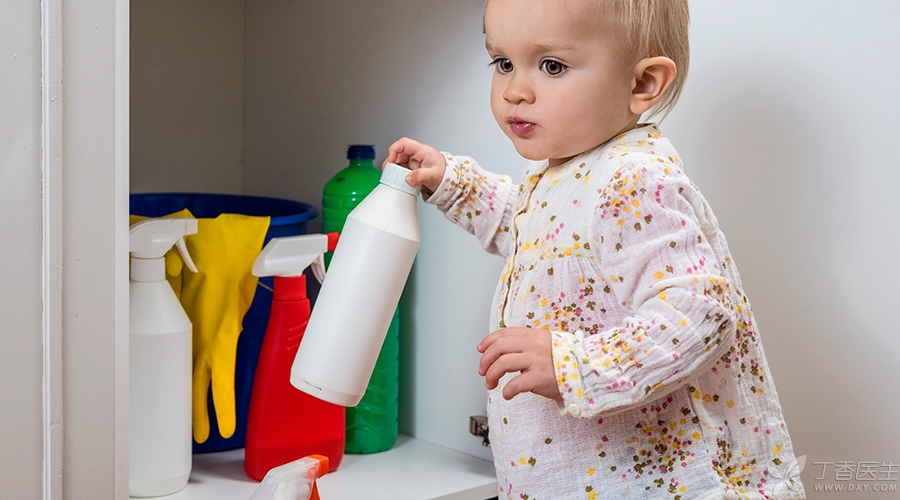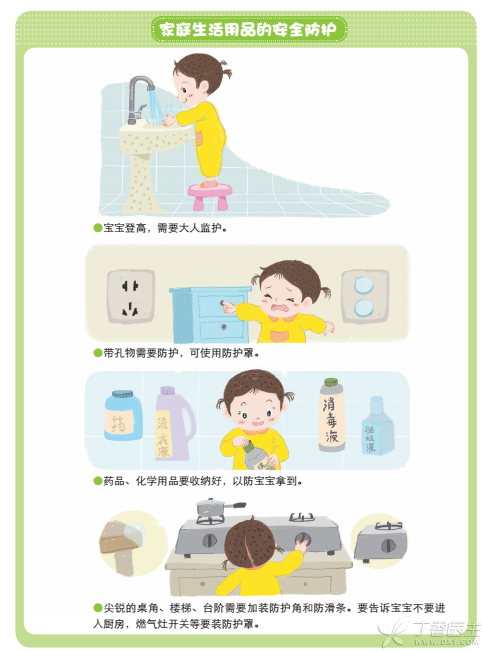
After the age of 1, children’s large-scale exercise and fine exercise abilities develop rapidly. The ability to continuously and freely roll over various obstacles, climb to any height and place he wants to climb, and the ability to walk alone gives children great freedom of movement. With the rapid development of intelligence, the baby is almost omnipotent and becomes a veritable small explorer, followed by an increase in danger.
It is to restrict the baby’s behavior and prevent the baby from exploring. Or is it to create a safe environment for the baby so that the baby has room to give full play to his nature? The answer goes without saying, of course, is the latter.
Children are naturally fond of playing with water, but they lack safety awareness. Children drown from time to time, even at home. To prevent babies from drowning, not only when swimming and outdoors, but also at home need some protection.
Do not store water at any time in bathtubs, washbasins, washing machines and various containers that can hold water in the home to prevent the baby from suffocating when burying his face in the water.
The age of walking, running, jumping and jumping
Children who can walk can do almost anything. They can climb to a height their parents can’t think of with the help of anything. Don’t put dangerous objects such as fragile objects on high. Because when children jump from a height, they will not consider whether there are dangerous objects below.
Children not only like to jump from high places, but also like to hide themselves, such as cloakrooms and wardrobes full of clothes, wrap themselves up with curtains, and hide themselves behind doors or under beds. Therefore, do not place dangerous objects in these places.
- Ensure that the hook for hanging clothes is strong and will not be pulled off by the baby, so as not to cause accidents when the baby is buried under the clothes pile. Don’t have ropes on the curtains to avoid suffocation caused by winding around the baby’s neck. If there are upper and lower bunks in the home, babies of this age group cannot live in the upper bunk, and the stairs climbing to the upper bunk should be removed to prevent the baby from climbing to the upper bunk and increase the risk of falling from high places. Babies can climb to heights you think you cannot climb with the help of stools, chairs, sofa backs, etc., so do not place fragile and heavy objects in display cabinets, bookcases and other cabinets.

All kinds of switches will be turned on.
The development of fine movement ability of hands is the perfect embodiment of children’s intellectual development. At this stage, the baby wants to take apart anything that can be taken apart to explore the mystery. No matter whether it is expensive or dangerous, even if there is something dangerous of explosion, the baby will not hesitate, because at this time, the child has no sense of danger.
You can’t regard your baby as a [destroying king] or a [irritating child]. Strong curiosity, thirst for knowledge and desire to know the world make your baby have valuable adventure and exploration spirit.
What parents should do is to establish safety awareness, actively avoid potential dangers, create a relatively safe space for their babies to move, avoid possible dangerous situations that may bring to their babies as much as possible, be familiar with first aid knowledge, master out-of-hospital treatment measures, and deal with sudden accidents.
Instead of restricting the baby’s activities, imprisoning the baby’s nature, passively avoiding risks and binding the baby’s hands and feet.
Babies at this stage may turn on various knobs and switch on gas, water heater, vacuum cleaner, humidifier and air freshener.Use various remote controllers to turn on air conditioners, televisions and electric water heaters.Turn on the tap and listen to the sound of running water.Enjoy the touch of the water on your small hands.
- Protective covers should be installed on the knobs of gas and water heaters. Put humidifiers, air fresheners, vacuum cleaners, electric irons and other household appliances out of the reach of the baby or install protective devices; Install safety protection devices on the faucet. Don’t think that the baby can’t reach the faucet. He may use stools and chairs to increase his height. To ensure that the detachable toys or articles in the baby’s hands are safe and will not cut or prick the baby.
What if your little hand is caught
Babies like to insert their fingers into the holes. Do not give babies containers or articles with holes that can just accommodate their fingers and small hands to play with.
Once fingers or other parts get stuck, you must be calm and do not rush to pull out or pull hard. Doing so will not only fail to save the baby, but also backfire. The baby will cry and struggle due to severe pain, and the fingers embedded in the bottle mouth will swell, squeeze tighter and make it more difficult to pull out.
At this time, take a cup of warm water and pour it into the bottle mouth along the fingers to increase the lubricity between the fingers and the bottle mouth. Hold the fingers embedded in the bottle mouth with one hand, fix the bottle mouth with the other hand, and try to move outward while rotating gently. Do not exert any force, so as not to cause the baby to cry nervously and lose the baby’s cooperation.
If you are not sure to rescue the baby or the embedding is very tight, please call the emergency number immediately or take the baby directly to the emergency center or the emergency department of the hospital.
